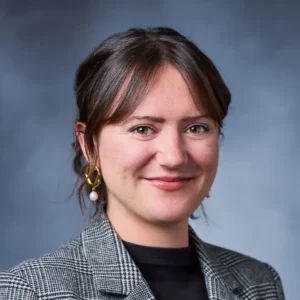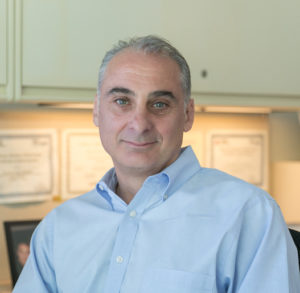Kaiser Permanente study finds up to 30% higher odds of hospital admissions, emergency department use, and mental health visits for patients with social needs
One in 5 patients with multiple medical diagnoses also has social risks that increase their odds of being admitted to the hospital, going to the emergency department, or requiring mental health care, a new Kaiser Permanente study found.

“We know that medically complex patients — patients with 2 or more chronic medical conditions — use a disproportionate amount of health care services,” said first author Emma L. Tucher, PhD, a delivery science fellow at the Kaiser Permanente Division of Research. “The take-home message from our study is that there is a subgroup of these complex patients with social risks, and this population has higher health care use. These patients can be identified through their electronic health record, and this creates an opportunity to address their social risks and potentially improving their outcomes.”
The study, published in JAMA Network Open, found that highly medically complex patients who had social risks had 20% higher odds of being admitted or readmitted to the hospital or seeking care in the emergency department than similar patients without social risks. These patients also had 30% higher odds of seeing a mental health provider. Patients who were moderately medically complex and had social risks had 20% higher odds of inpatient admissions, emergency department visits, and mental health visits than similar patients without social risks.
The impact of social risks
National studies on health care use have shown that medically complex patients cost the health care system significantly more than other patients. This new study evaluated whether medically complex patients with social risks — such as financial strain, housing instability, and food insecurity — use more services than those without social risks.
The study included 97,252 adult members of Kaiser Permanente Northern California (KPNC) who were identified as medically complex through their electronic medical records. To get an even better picture, the research team categorized the patients as either moderately or highly medically complex.
The patients we looked at are in the top 5% of medical complexity.
— Emma L. Tucher, PhD
“The patients we looked at are in the top 5% of medical complexity,” said Tucher. “But we also wanted to see if there were differences in social risks for those with even more medical complexity. We felt that was important because we knew the patients who were the most medically complex were more likely to be older, and that they would likely require different types of interventions than would medically complex patients who are younger.”
Moderately complex patients had multiple illnesses, were at high risk for hospitalization, or had 2 or more prior emergency department admissions. Highly complex patients met these criteria and also had prescriptions for at least 7 medications or for high-risk medications, had at least one uncontrolled health condition, had fallen or were at risk of falling, or required medical equipment in their home or care facility.
The study analyzed inpatient hospital visits and readmissions, emergency department use, and outpatient visits to primary care providers, specialists, or mental health providers for 12 months, from January 2023 to January 2024. Within the total group, the researchers identified 27,827 moderately medically complex patients; 18.2% had social risks. There were 69,425 highly medically complex patients; 25% had social risks. Overall, the patients most likely to have social risks were women, people who were Black or Hispanic, and people who were eligible for Medicaid.

“The increased risk of emergency department and hospital admission among patients with concurrent social needs highlights the important role social needs appear to play in the health of our most complex patients,” said senior author Richard Grant, MD, MPH, a research scientist at the Division of Research and The Permanente Medical Group regional director of Research and Evaluation for Complex Needs. “Our results support the value of Kaiser Permanente’s efforts to address unmet social needs to improve clinical outcomes.”
Grant recently received $4 million from the Patient-Centered Outcomes Research Institute (PCORI) to compare methods of addressing the social needs of adults with multiple chronic conditions.
Kaiser Permanente and other health care providers are investing in programs to coordinate care, connect individuals to resources, and provide health education and navigation. The new study’s findings will contribute to ongoing efforts to identify and address patients’ social risks.
“Our study shows that there are certain characteristics of social risk available in electronic health records that can help identify patients with social risks, and that’s the first step in getting them support,” said Tucher.
This study was funded by the Kaiser Permanente Northern California Division of Research Delivery Science Fellowship Program.
Co-authors include Allison L. Steele, MPH; Connie S. Uratsu, RN, MS, PHN; and Jodi K. McCloskey, MPH, of the Division of Research.
# # #
About the Kaiser Permanente Division of Research
The Kaiser Permanente Division of Research conducts, publishes and disseminates epidemiologic and health services research to improve the health and medical care of Kaiser Permanente members and society at large. It seeks to understand the determinants of illness and well-being, and to improve the quality and cost-effectiveness of health care. Currently, DOR’s 600-plus staff is working on more than 450 epidemiological and health services research projects. For more information, visit divisionofresearch.kaiserpermanente.org or follow us @KPDOR.





This Post Has 0 Comments